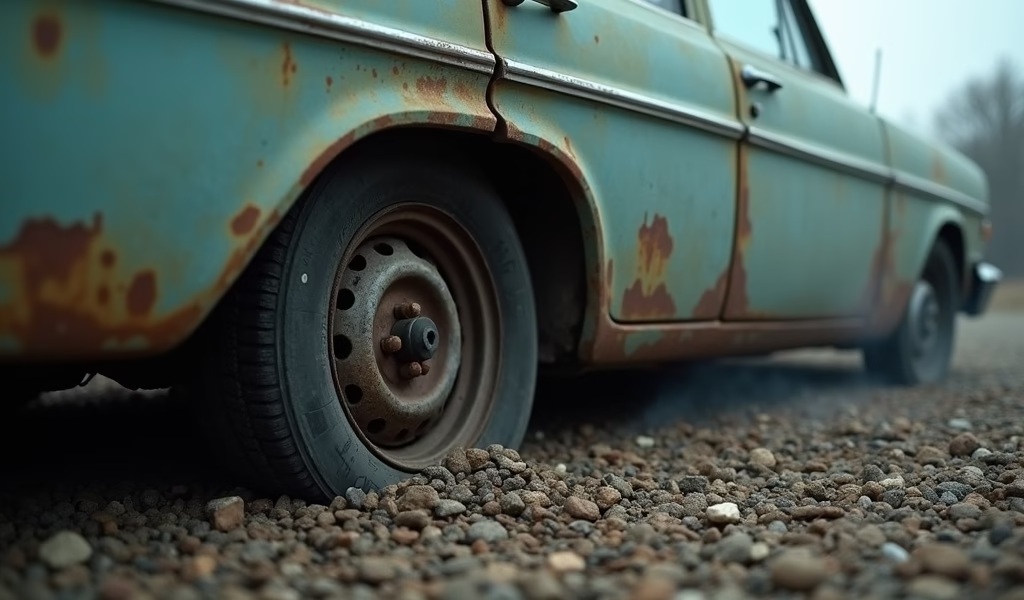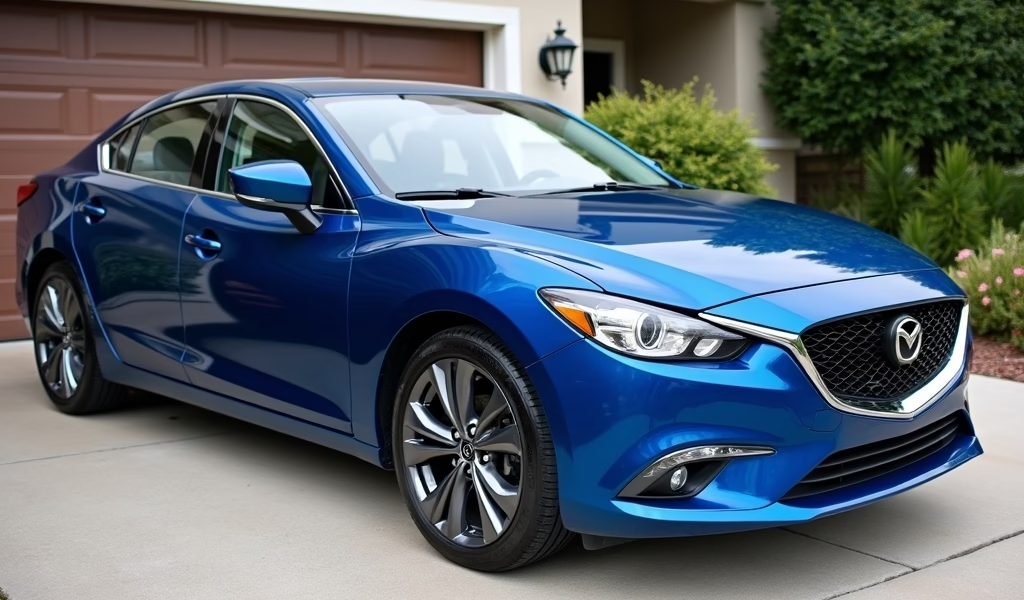Overview
This article outlines five essential strategies for maximizing profit when selling a car privately: organizing documentation, addressing maintenance issues, professional detailing, strategic pricing, and effective marketing. Private sales typically yield 15-25% more than dealer trade-ins, making the extra effort worthwhile for well-maintained vehicles that are properly presented to potential buyers.
Table of Contents
- Understanding the Market: Why Selling Your Car Privately Matters
- Preparing Your Car: First Impressions Count
- Tip 1: Get Your Documentation in Order
- Tip 2: Address Maintenance Issues
- Tip 3: Detail Like a Pro
- Tip 4: Price It Right
- Tip 5: Market Your Vehicle Effectively
- Conclusion: Making Your Private Sale a Success
- Frequently Asked Questions
Understanding the Market: Why Selling Your Car Privately Matters
Looking to offload your trusty four-wheeled companion? When it comes to selling your used vehicle, skipping the dealership middleman can put an extra thousand or two in your pocket. I’ve spent three decades under the hood and guiding folks through the selling process, and I’ll tell you straight—private sales are where the money is.
Cars for sale by owner typically fetch 15-25% more than dealer trade-ins. Why? Because you’re cutting out the profit margin that dealers need to survive. It’s like selling your house without a realtor’s commission—that money stays with you instead.
But higher profits come with responsibilities. You’ll need to handle everything from advertising to negotiating to paperwork. Don’t worry, though—I’m about to walk you through five essential care tips that will maximize your car’s value and help seal the deal with minimal headaches.
Preparing Your Car: First Impressions Count
Remember when you first laid eyes on your car? That same “love at first sight” feeling is exactly what you want potential buyers experiencing. First impressions aren’t just important—they’re everything in the private sale game.
A car that looks neglected on the outside sends a powerful message about how it might have been treated mechanically. Studies show that buyers form their initial opinion within the first 7-10 seconds of seeing a vehicle, and about 85% make their decision based partly on appearance.
Before we dive into the nitty-gritty, understand this: preparation isn’t just washing and vacuuming. It’s a comprehensive approach that addresses both aesthetics and mechanics. Think of it as preparing your car for a first date—you want it looking its best, smelling pleasant, and behaving perfectly.

Tip 1: Get Your Documentation in Order
Nothing screams “responsible owner” louder than a folder bulging with service records. In my years turning wrenches, I’ve seen countless sales fall through because sellers couldn’t prove their maintenance claims. Documentation isn’t just paperwork—it’s proof you’ve loved that vehicle.
Start gathering these essential documents:
- Clear title (without liens) in your name
- Complete service history records
- Original owner’s manual and booklets
- Recent inspection reports
- Receipts for major repairs or upgrades
- Vehicle history report (CarFax or similar)
That stack of oil change receipts you’ve been tossing in your glove box? They’re worth their weight in gold now. According to Consumer Reports’ selling guide, documented maintenance can increase your car’s value by up to 10%.
Remember that bill from replacing the timing belt? That’s not just a receipt—that’s evidence you’ve handled preventative maintenance. Each document tells the story of a well-maintained vehicle, giving buyers confidence they’re not inheriting someone else’s headache.
Tip 2: Address Maintenance Issues
That check engine light you’ve been ignoring? It’s about to cost you ten times what fixing it would have. Minor issues have a way of looking major to potential buyers. They’ll use every little flaw as a bargaining chip to chip away at your asking price.
Before listing your car for sale, invest in these maintenance essentials:
- Fresh oil change and filter replacement
- New air filter if it’s been over 15,000 miles
- Check and top off all fluids
- Replace worn wiper blades
- Fix any warning lights or electrical issues
- Address any unusual noises or vibrations
That $50 repair might preserve $500 in negotiating power. I’ve seen buyers walk away from otherwise perfect vehicles because of minor issues that triggered their “what else is wrong?” alarm. When someone’s considering where to buy a used car, they’re looking for signals that yours has been well-maintained.
Consider getting a pre-sale inspection from an independent mechanic. For about $100-150, you’ll get professional validation of your car’s condition, which is powerful ammunition during price negotiations. According to a study by Autolist, cars with recent mechanical inspections sell up to 30% faster than those without.
Tip 3: Detail Like a Pro
Your car’s appearance speaks volumes before you ever say a word to potential buyers. That coffee stain on the center console? It might cost you hundreds in perceived value. A proper detailing job isn’t just about aesthetics—it’s an investment that typically returns 200% or more of what you spend.
Here’s your detailing checklist:
- Wash exterior thoroughly, including wheel wells and undercarriage
- Clay bar treatment to remove embedded contaminants
- Polish and wax to restore shine and protect paint
- Clean and dress tires and trim
- Vacuum interior thoroughly, including trunk
- Steam clean upholstery and carpets
- Clean all glass surfaces inside and out
- Detail engine bay (light cleaning, no pressure washing)
- Remove all personal items and trash
- Use air freshener (subtle, not overpowering)
That “new car smell” doesn’t have to be just a memory. Products like Chemical Guys New Car Scent can recreate that intoxicating aroma that subconsciously signals “quality” to buyers.
Don’t overlook small details like cleaning air vents with a detailing brush or removing scuffs from door panels. These tiny improvements compound into an overall impression of meticulous care. Remember, you’re not just selling transportation—you’re selling the feeling that comes with a well-maintained vehicle.

Tip 4: Price It Right
Pricing your car is where art meets science. Too high, and you’ll scare away potential buyers before they even see your vehicle. Too low, and you’re leaving money on the table. Finding that sweet spot requires research and a dash of strategy.
Start by checking these pricing resources:
- Kelley Blue Book (KBB) Private Party Value
- Edmunds True Market Value
- NADA Guides
- Local marketplace listings for comparable vehicles
The key is understanding your local market. Cars for sale by owner in Michigan might fetch different prices than identical models in Arizona, where rust isn’t an issue. Regional preferences matter too—trucks and SUVs typically command premium prices in rural areas and snowy regions.
Price your car about 10% above your minimum acceptable offer. This gives you negotiating room while still appearing reasonable. Most buyers expect to haggle, so building in this buffer prevents you from feeling pressured to accept lowball offers.
Be honest about your vehicle’s condition when researching values. That “excellent” condition rating on KBB has specific criteria—if your car doesn’t meet them, use the “good” or “fair” value instead. Overpricing based on an inflated condition assessment just wastes everyone’s time, including yours.
Tip 5: Market Your Vehicle Effectively
You’ve prepped your car to perfection and priced it right—now it’s showtime. Marketing your vehicle effectively can mean the difference between selling in three days or three months. In today’s digital marketplace, presentation is everything.
When listing your car for sale, consider these high-impact strategies:
- Take 15-20 high-quality photos from multiple angles
- Write a detailed, honest description highlighting key features
- List recent maintenance and improvements
- Mention if you’re the original owner or how long you’ve owned it
- Specify whether service was dealer or specialist-performed
- Be transparent about any issues or quirks
- Post on multiple platforms (Facebook Marketplace, Craigslist, OfferUp, etc.)
Photography matters enormously. Take pictures in good lighting (early morning or late afternoon is ideal), with a clean background. Capture exterior angles, interior details, the odometer reading, and under-hood shots. A virtual walk-around builds trust before the buyer ever sees the car in person.
When writing your description, focus on what makes your car special. That meticulous maintenance history? Highlight it. One-owner status? That’s golden. Recent major services like timing belt replacement? Definitely mention those. According to car-selling platform Shift, listings with detailed maintenance histories receive 23% more inquiries than those without.
Safety first when showing your vehicle. Meet prospective buyers in public places during daylight hours, bring a friend if possible, and always trust your instincts. For test drives, check the buyer’s valid driver’s license and insurance, and accompany them on the drive.
Conclusion: Making Your Private Sale a Success
Selling your car privately isn’t just about getting the best price—though that extra 15-25% compared to trade-in values certainly sweetens the deal. It’s about taking control of the process and finding your vehicle a new home where it will be appreciated.
The five care tips we’ve covered—organizing documentation, addressing maintenance issues, professional detailing, strategic pricing, and effective marketing—create a comprehensive approach that positions you for success. Each step builds on the others, creating a complete package that appeals to serious buyers.
Remember, honesty builds trust. Being upfront about your car’s condition doesn’t devalue it—it establishes your credibility and reduces the chance of post-sale disputes. Cars for sale by owner succeed when sellers strike the right balance between highlighting strengths and acknowledging imperfections.
With these strategies in your toolkit, you’re well-equipped to navigate the private sale process with confidence. Your well-maintained, properly documented, beautifully detailed, fairly priced, and effectively marketed vehicle won’t just sell—it will create a win-win situation where both you and the buyer walk away satisfied.
Now, roll up those sleeves and get started. Your car’s next owner is out there waiting to discover the gem you’ve prepared for them.
Frequently Asked Questions
How do I know if selling my car privately is worth the effort?
Private sales typically net 15-25% more than trade-ins, which can mean thousands of dollars for higher-value vehicles. For cars worth over $5,000 in good condition, the financial benefit usually outweighs the time investment.
Do I need to disclose previous accidents when selling privately?
Yes, you should disclose any significant accidents or damage history to avoid potential legal issues later. Transparency builds trust and prevents buyers from feeling misled if they discover the history on their own.
How can I protect myself from payment scams?
Only accept cash, cashier’s checks (verified at the bank together), or electronic transfers that have cleared before releasing the vehicle. Never accept personal checks or payment plans from strangers.
Should I get my car professionally detailed before selling?
Professional detailing typically costs $150-300 but can increase perceived value by $500-1000 or more. For vehicles worth over $10,000, it’s usually a worthwhile investment with excellent ROI.
What paperwork do I need to transfer ownership legally?
At minimum, you’ll need a properly completed title transfer and bill of sale. Check your state DMV website for specific requirements, as some states require additional forms like odometer disclosure or emissions certification.

